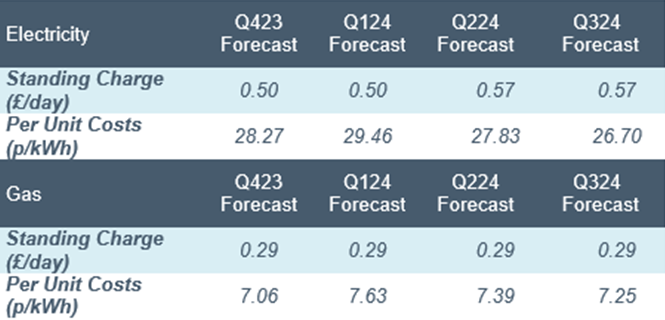As of October 2023, the price cap for a typical dual fuel, direct debit consumer is forecast to reduce quarter-on-quarter to £1,860. Following this initial dip, the cap is projected to rise to around £1,960 in January 2023, before experiencing small decreases in March and July2.
Figure 1: Cornwall Insight’s Default Tariff Cap forecasts using new Typical Domestic Consumption Values (dual fuel, direct debit customer)

Source: Cornwall Insight, calculated from market close figures 24/07/2023
Figure 2: Cornwall Insight’s Default Tariff cap forecasts using new Typical Domestic Consumption Values: Standing charge and unit rate (dual fuel, direct debit customer)

Source: Cornwall Insight, calculated from market close figures 24/07/2023
Note: All figures are national average unless otherwise stated. All intermediate and final calculations are rounded to two decimal places. Totals may not add due to rounding.
Dr Craig Lowrey, Principal Consultant at Cornwall Insight said:
“The news of a relative stabilising of energy bills will no doubt leave households with mixed feelings. After the surge in bills seen last winter, it may bring a sense of relief to people that energy prices are currently not forecast to surge unexpectedly. However, there will also be disappointment with prices still well above the levels seen a few years ago – leaving many longing for more affordable options.
“The wholesale market remains the main driver of bills, and unfortunately there is no immediate prospect of prices there returning to historic averages. Therefore, it becomes imperative the government and other stakeholders explore alternative measures to cater to consumers. This includes options to provide targeted support to the most vulnerable while promoting flexible energy solutions that encourage efficient energy usage.
“Moreover, we must remain committed to funding the transition to renewable energy sources and maintaining our net-zero targets. By doing so, we can establish a stable and secure energy supply that is less susceptible to fluctuations in the international market.”





